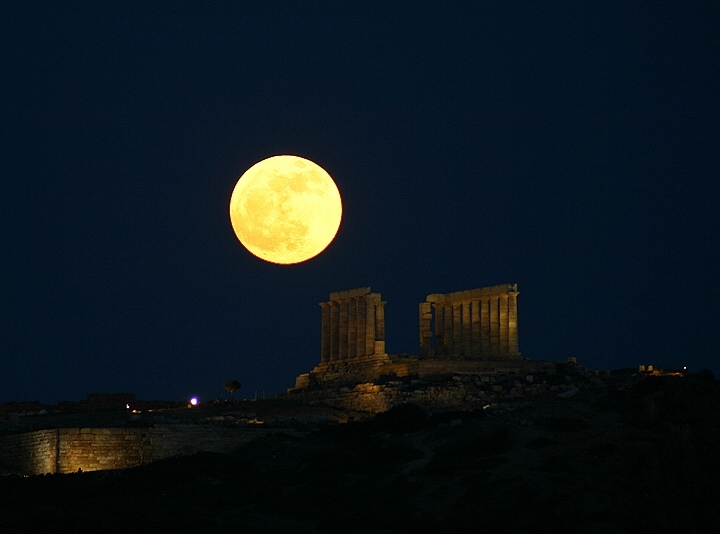
image by Anthony Ayiomamitis
Ancient Greek architects were very aware of the importance of location in siting temples. They were often placed on tops of hills and other dramatically visible locations. It seems very likely that Anthony Ayiomamitis is not the first Greek who has been awed by the rise of the full Moon near a wondrous temple - but he is the first one who captured the spectacle. Of course, observers 2000 years ago saw an unruined structure with a roof and painted columns. But the Moon of 2000 years ago was the same as we see today. Let us hope that another view of a rising Moon over this temple, much sooner than 2000 years in the future, will reveal a Moon dotted with the lights of cities.
Technical Details:
May 23, 2005. Canon EOS 300d with zoom lens @ 300 mm.
Related Links:
Yesterday's LPOD: The Cassini Triangle
Tomorrow's LPOD: Moderate Sun Over a Magnificent Crater
COMMENTS?
Register, Log in, and join in the comments.



